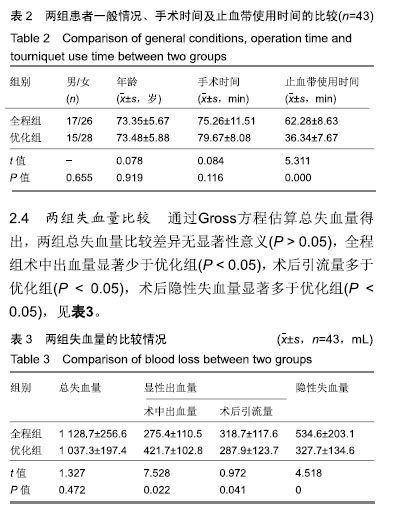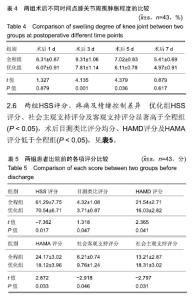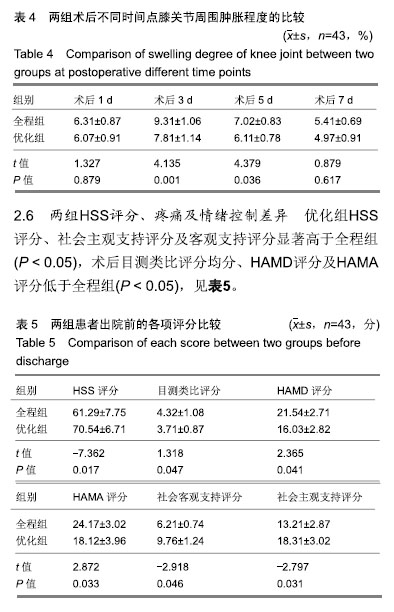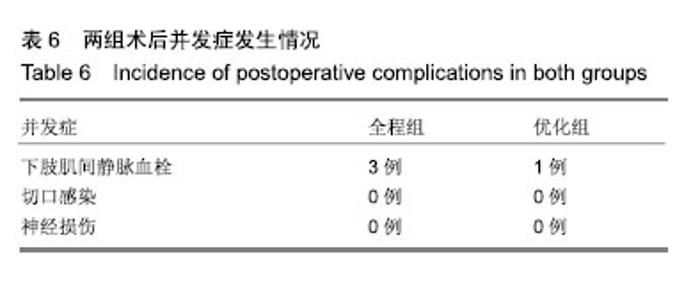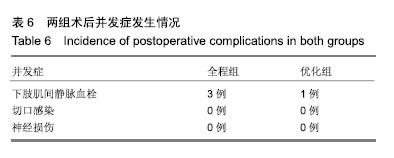| [1]Van Manen MD, Nace J, Mont MA.Management of primary knee osteoarthritis and indications for total knee arthroplasty for general practitioners. J Am Osteopath Assoc. 2012;112(11):709-715.[2]Kehlet H,Wilmore DW,Kehlet H,et al.Multimodal strategies to improve surgical outcome. Am J Surg.2002; 183(6):630-641. [3]Zhu S,Qian W,Jiang C,et al.Enhanced recovery after surgery for hip and knee arthroplasty: a systematic review and meta-analysis. Postgrad Med J.2017;93:736-742.[4]Zhang S,Huang Q,Xie J,et al.Factors influencing postoperative length of stay in an enhanced recovery after surgery program for primary total knee arthroplasty.J Orthop Surg Res.2018;13:29. [5]Wynell-Mayow W, Saeed MZ.Much ado about nothing: the effect of tourniquet time on an accelerated rehabilitation programme following total knee replacement (TKR).Eur J Orthop Surg Traumatol. 2018; 28(6):1177-1182. [6]Harsten A,Bandholm T,Kehlet H,et al.Tourniquet versus no tourniquet on knee-extension strength early after fast-track total kneearthroplasty;a randomized controlled trial. Knee.2015; 22(2): 126-130.[7]Rasmussen LE,Holm HA,Kristensen PW,et al.Tourniquet time in total knee arthroplasty. Knee.2018;25(2):306-313.[8]Leurcharusmee P,Sawaddiruk P,Punjasawadwong Y,et al.The Possible Pathophysiological Outcomes and Mechanisms of Tourniquet-Induced Ischemia-Reperfusion Injury during Total Knee Arthroplasty.Oxid Med Cell Longev.2018;2018:8087598. [9]Zhang W,Li N,Chen S,et al.The effects of a tourniquet used in total knee arthroplasty: a meta-analysis. J Orthop Surg Res.2014;9(1):13.[10]Fan Y,Jin J,Sun Z,et al.The limited use of a tourniquet during total knee arthroplasty: a randomized controlled trial.Knee. 2014;21(6): 1263-1268.[11]Gross JB.Estimating allowable blood loss: corrected for dilution. Anesthesiology.1983; 58(3):277-280.[12]Jiang FZ,Zhong HM,Hong YC,et al.Use of a tourniquet in total knee arthroplasty: a systematic review and meta-analysis of randomized controlled trials. J Orthop Sci.2015;20(1):110-123.[13]Arcia-Guzmán A,Bernabé-Castañeda E,Arcia-Guzmán JJ,et al. Assessment of bleeding and operative time in total knee arthroplasty with and without tourniquet Comparative study.Acta Ortop Mex. 2014; 28(2):106-112.[14]Tai TW,Lin CJ,Jou IM,et al. Tourniquet use in total knee arthroplasty: a meta-analysis.Knee Surg Sports Traumatol Arthrosc. 2011;19(7): 1121-1130.[15]Wang C,Zhou C,Qu H,et al.Comparison of tourniquet application only during cementation and long-duration tourniquet application in total knee arthroplasty: a meta-analysis.J Orthop Surg Res. 2018;13:216.[16]谢小伟,岳辰,康鹏德,等.加速康复模式下初次全膝关节置换术后急性疼痛的相关因素分析[J].中华骨与关节外科杂志, 2016,9(6):489-492.[17]Shetty T,Nguyen JT,Sasaki M,et al.Risk factors for acute nerve injury after total knee arthroplasty. Muscle Nerve. 2018;57(6):946-950.[18]Mayer C,Franz A,Harmsen JF,et al.Soft-tissue damage during total knee arthroplasty: Focus on tourniquet-induced metabolic and ionic muscle impairment.J Orthop.2017;14(3):347-353.[19]Vaishya R,Agarwal AK,Vijay V.Short term outcomes of long duration versus short duration tourniquet in primary total knee arthroplasty: A randomized controlled trial.J Clin Orthop Trauma. 2018;9(1):46-50.[20]马骏,李国庆,曹力.全膝关节置换术中不同压力止血带对术后肿胀及疼痛影响的临床研究[J].中国矫形外科杂志, 2013,21(13):1297-1300.[21]Muyskens JB,Hocker AD,Turnbull DW,et al.Transcriptional profiling and muscle cross-section analysis reveal signs of ischemia reperfusion injury following total knee arthroplasty with tourniquet. Physiol Rep. 2016;4(1). pii: e12671. doi: 10.14814/phy2.12671.[22]Ejaz A,Laursen AC,Kappel A,et al.Tourniquet induced ischemia and changes in metabolism during TKA: a randomized study using microdialysis.BMC Musculoskelet Disord.2015;16:326.[23]Li Z,Liu D,Long G,et al.Association of tourniquet utilization with blood loss, rehabilitation, and complications in Chinese obese patients undergoing total knee arthroplasty: A retrospective study. Medicine (Baltimore). 2017;96(49):e9030. |



